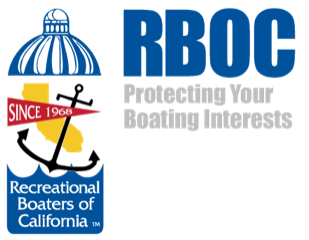RBOC is closely following developments to conserve California’s waters to ensure that previous achievements are taken into account and that on-the-water recreational opportunities will be recognized and enhanced.
Most recently, Governor Newsom announced on September 9 that California has officially conserved more than 25% of its land on its march to achieving its ambitious conservation goals with the release of the 2024 Annual Progress Report for the 30×30 Initiative – California’s commitment to conserve 30% of state lands and coastal waters by the year 2030.
A stated by the Governor, “The report shows that California is making significant progress toward this goal, with the state now having conserved 25.2% of its lands and 16.2% of its coastal waters.”
The report also states that there is more work to be done including coastal waters conservation:
“Looking forward, the 30x30 movement must conserve an additional 4.8 million acres on land and 500,000 acres of coastal waters to meet our commitment. This is no small task. With fewer than six years until 2030, achieving it will require all of us to work together in an unprecedented way to meet our goal.”
“California’s marine protected area (MPA) network already conserves 16.2% of our coastal waters, and OPC is spearheading the effort to conserve an additional 13.8% of coastal waters by 2030. This will include adaptively managing the MPA network; strengthening biodiversity protections in California’s National Marine Sanctuaries; exploring the role of area-based biodiversity conservation tools beyond MPAs and sanctuaries (such as water quality protected areas or fisheries management measures in specific areas); and supporting tribally led conservation, including through the designation and co-stewardship of Indigenous Marine Stewardship Areas.
“In June, OPC released a draft decision-making framework for evaluating candidate 30x30 Conservation Areas in coastal waters that builds upon internationally recognized, science-based guidance and sets an ambitious standard for marine protections. Simultaneously, it recognizes that biodiversity conservation and sustainable, well-managed use of marine ecosystems are not mutually exclusive. OPC is conducting robust public engagement and tribal consultation on the draft framework throughout the summer of 2024. The goal is to have it finalized and make initial determinations about areas beyond MPAs that may count toward 30x30 by the end of the year. In the future, the framework will help identify potential new conservation measures to address major threats to biodiversity in coastal waters. These measures would then be designed and implemented in partnership with tribes, coastal communities, conservation organizations, and commercial users.
“Additionally, following the first-ever science-based review completed last year, the California Fish and Game Commission (CFGC), in close partnership with CDFW and OPC, has begun considering community-driven petitions for changes to the MPA network. In parallel, OPC initiated early consultation with California Native American tribes to explore the concept of Indigenous Marine Stewardship Areas and develop a pathway for their designation and costewardship. Last year, as sovereign nations, the Resighini Tribe of Yurok People (now the Pulikla Tribe of Yurok People), Tolowa Dee-ni’ Nation, and Cher-Ae Heights Indian Community of the Trinidad Rancheria designated the first-ever Indigenous Marine Stewardship Area in the U.S. along the North Coast. This is a critical step in restoring Traditional Ecological Knowledge and management practices that sustained the area’s natural abundance before colonial disruption. The state is in the early stages of developing policies to support this concept, and OPC is working in partnership with these three tribes on next steps to align state and tribal priorities.
“Combined, these efforts will identify opportunities for California to build partnerships, strengthen biodiversity protections, and conserve an additional 500,000 acres of coastal waters in the coming years.”

